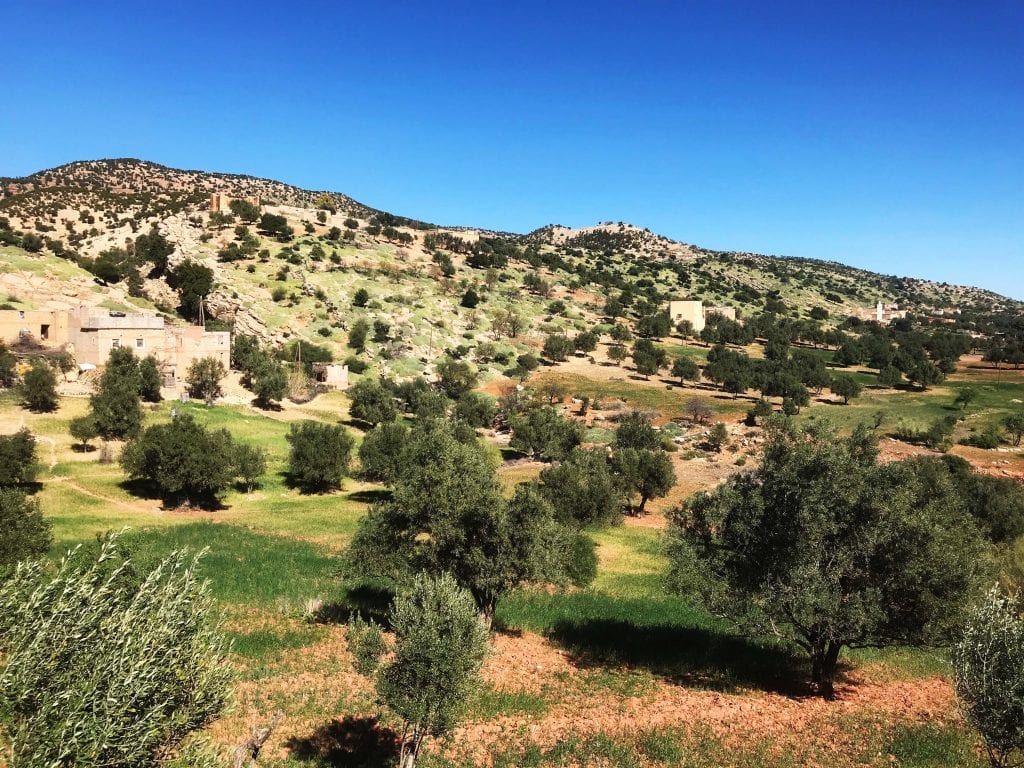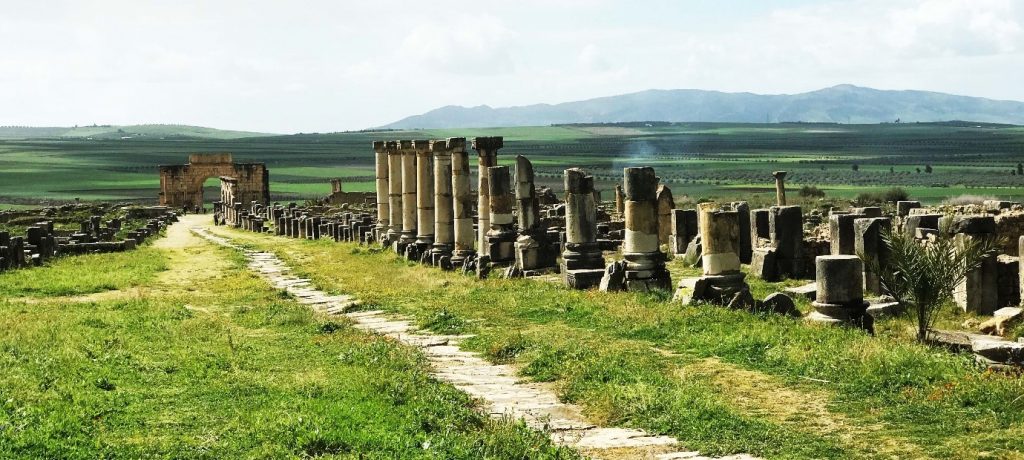Why Morocco For The Best Extra Virgin Olive Oil?
Updated 24th March 2023

Contents:
- The Best Olive Oil From Morocco Bucks Production Trend
- Why Moroccan Olive Oil Truly Is The Finest In The World
- What’s Important When Choosing The Best Olive Oil?
- The Best Olive Oil From Morocco Is Not New!
- The History Of Morocco And Its Olive Oil Culture
The Best Olive Oil From Morocco Bucks Production Trend
At a time when some olive oil producers are reporting a decline in production due to weather problems, Morocco’s olive oil production is projected to rise by 25% at the end of 2022, according to data from the European Commission.
According to a report in Farmers Review, the European Commission notes that oil production worldwide has largely recovered in non-EU countries.
This is great news for fans of quality extra virgin olive oil from this exceptional source. But, there are so many other wonderful reasons to choose extra virgin olive oil from Morocco.
If you’re looking for the best extra virgin olive oil, Morocco is the place to go. With its more temperate climates and the quality of production that the country offers, the flavor and quality of the extra virgin olive oil is hard to beat.
Why Moroccan Olive Oil Truly Is The Finest In The World
Combined with the traditional methods and know-how brought from the ancient times, the extra virgin olive oil from Morocco stands out as the absolute finest. Not only that, but its distinct flavor will transport you to the sunny and vibrant culture of North Africa. Not only will you find the delicate richness and texture without the greasiness that some other types of oils can have, you can also rest assured knowing that the product has been produced with an industry-leading standard of sustainability in mind as well.
The particular climate in the region allows the best olives to thrive and the careful cultivation by local farmers ensures that the highest standards are met.
The combination of all of these factors makes Moroccan extra virgin olive oil the perfect choice for any kitchen.
When it comes to olive oil, there are many things to consider. First and foremost, you want to make sure you’re buying the best quality olive oil possible. But what about the origin of the oil? Where was it made, and why did the producer choose that specific location? In this blog post, we’ll explore the making of olive oil in Morocco, and why we chose to source our oil from this beautiful country.
The Best Olive Oil: What Makes Morocco Special?
At our tasting events we are regularly asked about where our extra virgin olive oil, Morocco Gold comes from. When considering the best olive oil to buy, most people think of ‘Italian’ or ‘Spanish’ olive oils and can be surprised that Morocco is also a source of high-quality extra virgin olive oil.
Morocco Gold extra virgin olive oil is made from olives grown in the foothills of the Atlas mountains in Morocco, where the unique micro-climate and geology provides ideal conditions for olive growing.
A half-day’s drive northeast of Marrakech, nestled in the early ridges of the Atlas Range, a unique and unspoiled valley in the Beni-Mellal region presents ideal conditions for growing the prized Picholine Marocaine cultivar. A cousin of the widely known Picholine Languedoc from France, this local variety thrives in the region’s arid climate, dominates the Moroccan olive oil world and is renowned for its high polyphenol count, oxidative stability and longevity.
Morocco Gold’s extra virgin olive oil is produced using only this cultivar, which imparts a distinctive green fruitiness, hints of sweet almonds, fresh turf, fresh herbs and a “peppery” finish. It’s this exceptionally well balanced flavor profile that won the brand a gold medal for taste in the 2018 Food Talk Awards.

The Best Olive Oil From Morocco Is Not New!
Morocco has been producing high quality extra virgin olive oil for centuries – from the time of the Romans.
Morocco has truly set the standard for the rest of the world. Packed with many sought-after health benefits, it shouldn’t come as a surprise that its reputation has spread beyond the Moroccan borders to the rest of the globe; however, let’s not forget the long history Morocco has of providing prime olive oil production stretching back generations.
The History Of Morocco And It’s Olive Oil Culture
Morocco has been producing high quality extra virgin olive oil for centuries – from the time of the Romans. Here is a short summary of this wonderful and fascinating country.
Berber Morocco
The area of present-day Morocco has been inhabited since Neolithic Time (since 8000 BC), a period when the Maghreb was less arid than it is today. The Amazigh people, commonly referred to as Berbers or by their regional ethnic identity (Chleuh), most likely arrived at roughly the same time as the inception of the region. In the classical period, Morocco was known as Mauretania, although this should not be confused with the modern-day country of Mauretania.
Roman & Pre-Roman Morocco

North Africa and Morocco were slowly drawn into the wider emerging Mediterranean world by Phoenician trading colonies and settlements in the late Classical period. The arrival of Phoenicians heralded a long engagement with the wider Mediterranean, as this strategic region formed part of the Roman Empire, as Mauretania Tingitana. In the fifth century, as the Roman Empire declined, the region fell to the Vandals, Visigoths, and then Byzantine Greeks in rapid succession. During this time, however, the high mountains of most of modern Morocco remained unsubdued and stayed in the hands of their Berber inhabitants.
Dynasties
The Arab Alaouite Dynasty eventually gained control. Morocco was facing aggression from Spain and the Ottoman Empire that was sweeping westward. The Alaouites succeeded in stabilizing their position, and while the kingdom was smaller than previous ones in the region, it remained quite wealthy. In 1684, they annexed Tangier.
Welcome to Morocco
Morocco is a gateway to Africa, and a country of dizzying diversity. Here you’ll find epic mountain ranges, ancient cities, sweeping deserts – and warm hospitality.
Morocco offers a taste of the exotic for travellers who are interested in discovering a moderate Muslim country. It boasts a combination of natural wonders, windy old medinas and an immense history.
The top 10 places not to miss, when traveling to Morocco are: Djemaa El Fna Square, the Majorelle Gardens, the Mosque of Koutoubia, the Erg Chebbi Dunes, the Cascades D’Ouzoud Waterfalls, the Roman Ruins of Volubilis, the Todra Gorge, Ait Benhaddou Kasbah, Kasbah Taourirt and the Batha Musuem and Gardens.

From Saharan dunes to the peaks of the High Atlas, Morocco could have been tailor-made for travellers. Lyrical landscapes carpet this slice of North Africa like the richly coloured and patterned rugs you’ll lust after in local cooperatives.

Atlas Mountains
The mountains – not just the famous High Atlas but also the Rif and suntanned ranges leading to Saharan oases – offer simple, breath-taking pleasures: night skies glistening in the thin air, and views over a fluffy cloudbank from the Tizi n’Test pass. On lower ground, there are rugged coastlines, waterfalls and caves in forested hills, and the mighty desert.
Ancient Medinas
Morocco’s cities are some of the most exciting on the continent. Join the centuries-old trail of nomads and traders to their ancient hearts, from the winding medina maze of Fez to the carnivalesque street-theatre of the Djemaa el-Fnaa in Marrakesh.

In the rocky deserts medinas are protected by kasbahs, on the coast by thick sea walls. But it’s not just a heritage trip, as Morocco’s cities are forward-facing too, with glitzy new urban design in Casablanca, Rabat and Tangier looking to the future as well as paying homage to their roots.
Moroccan Activities
Enjoying Morocco starts with nothing more strenuous than its national pastime – people-watching in a street cafe with a coffee or a mint tea. Use the opportunity to plan your next moves – hiking up North Africa’s highest peak, learning to roll couscous, camel trekking in the desert, shopping in the souqs or getting lost in the medina. Between the activities, you can sleep in boutique riads, relax on panoramic terraces and grand squares, and mop up delicately flavoured tajines – before sweating it all out in a restorative hammam.
Traditional Life
Morocco is a storied country, that has, over the centuries, woven its ties to Sub-Saharan Africa, Europe and the wider Middle East into whole cloth. Its mixed Arab and Berber population forms a strong national identity, but an increasingly youthful one, taking the best of its traditions and weaving the pattern anew – from the countryside to the city, from the call to prayer from the mosque to the beat of local hip hop. Morocco has a hundred faces and sounds, all ready to welcome the traveller looking for spice and adventure.
Accommodations
Morocco has a variety of accommodations from which to choose. In the larger cities, such as Casablanca and Tangier, there are a number of international hotels including the Ramada, Sheraton and Hyatt Regency. However, throughout all of the major cities and in the metropolitan centres of Morocco, excellent five star hotels that offer the luxury of their international counterparts but with local charm and hospitality are available.
However, many travelers find that the best accommodations in Morocco are Riads, which are traditional Morocco homes that have been converted into small hotels and private guest houses. Riads are usually located inside the older districts throughout Morocco which are steeped in culture.

Modern Morocco
Morocco rejoined the African Union in 2017. With its growing economy, stable government, proximity to Europe and moderate brand of Islam, and is now making a bold bid to assume the mantle as the leader of the African Arab and Islamic states.
“Africa is the future – and the future starts today.” King Mohammed VI, the current ruler.
Morocco Quick Facts
Kingdom of Morocco: (Al Mamlaka al-Maghrebiya)
Capital of the country: Rabat
Biggest city: Casablanca
Language: Arabic (official), Berber dialects, French often the language of business, government and diplomacy
Literacy:Total Population: [52%] Male: [66%]; Female: [44%]
Religion: Muslim
Government: Constitutional Monarchy
Chief of State: King Mohammed VI
Prime Minister: Driss Jettou
Area: 446,550 km² (56th biggest country in the world)
Population: 36 million
Population Density: 72 People per square kilometer
Age of Population: 0-14yrs Males: 5,355,388; Females: 5,156,762
Area:172,413 square miles; slightly larger than California
GDP: $4,600
Year of Independence: 1956
Currency: Dirham (MAD;DH) 100 Dirhams about 10 Euros / $13 US
Notes: DH 10, 20, 50, 100 & 200.
Coins: DH 1, 5 & 10/5, 10, 20 & 50 centimes
Calling code: +212
Local Timth: Greenwich Mean Time
Weights & Measures System: Metric
